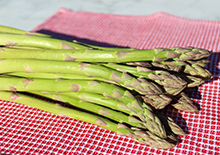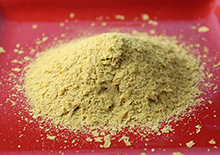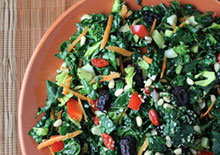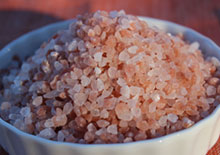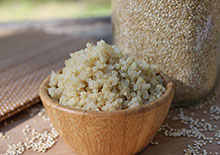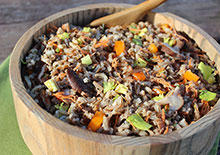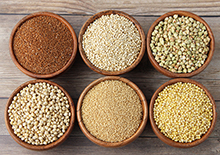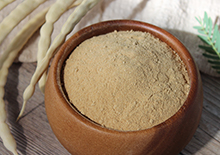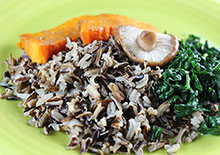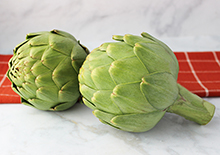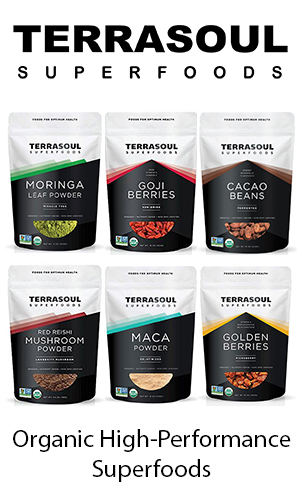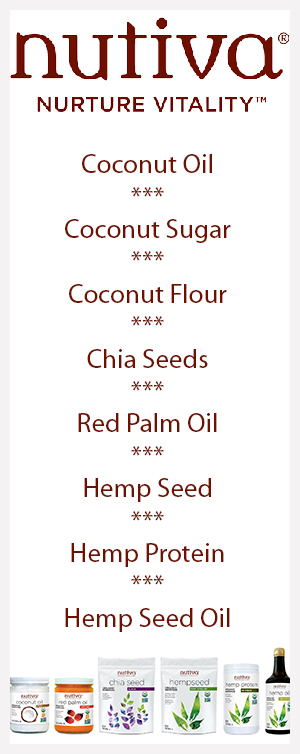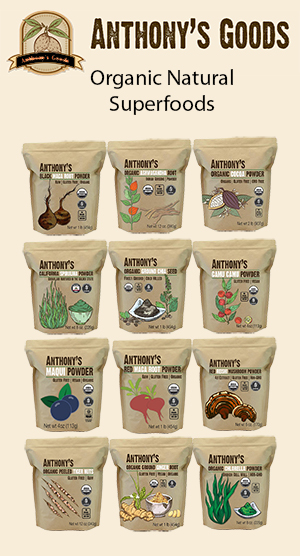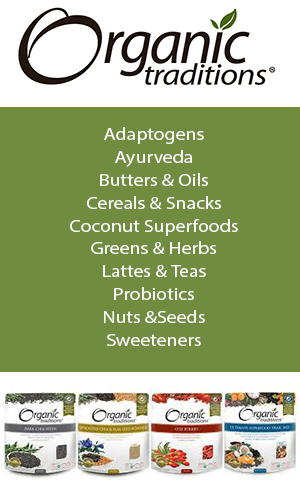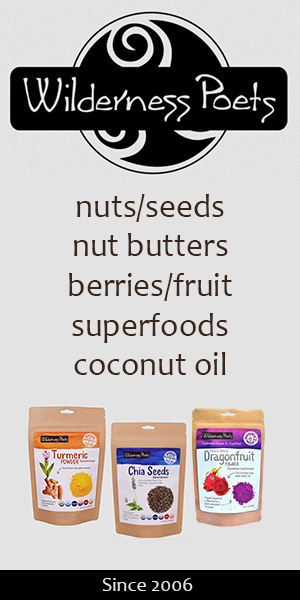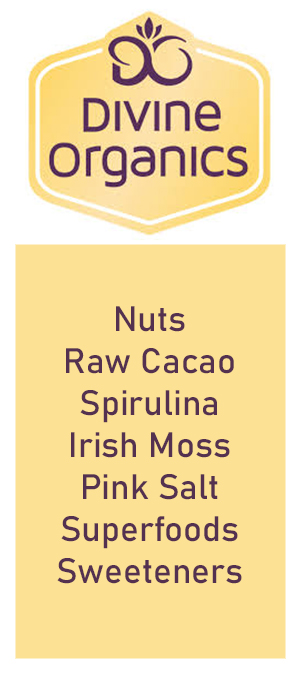- Home
- Plant-Based Cooking
- Green Leafy Vegetables
Green Leafy Vegetables, A Nutritive Alkalizing Food High in Fiber
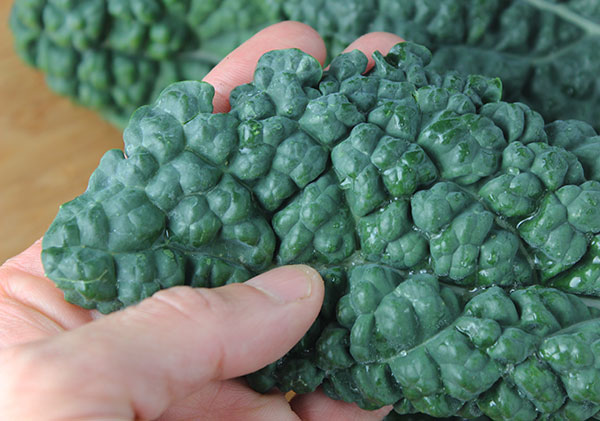
Green leafy vegetables are the tender edible leaves consumed from a wide variety of cultivated herbaceous plant species. While there are many different types available, most share basic nutritional qualities with some unique characteristics specific to each variation.
Chlorophyll-rich edible greens have healing and protective assets that help to cleanse the blood, balance body pH and are an energizing superfood for boosting cognitive and immune functions.
Some scientific evidence confirms that population groups that consume higher quantities of green leafy vegetables as part of a health promoting diet and lifestyle have a reduced risk of developing cardiovascular disease and certain cancers.
Leafy greens are composed of other health enhancing
phytonutrients such as phenols, indoles, flavonoids and substances like sulforaphane. They are abundant in trace minerals, omega fatty acids as well as vitamins and
antioxidants, like vitamin A, C, K, folate and small amounts of vitamin
E.
Fresh raw greens additionally contain living enzymes and digestible proteins that are especially building for muscle and tissue strength when consumed on a consistent basis. They are one of the highest sources of dietary fiber which helps to normalize bowel movements and has shown to be beneficial for weight loss.
Dark leafy greens, although a regular part of the diet in some countries, are considerably less predominant in the Standard American diet. In recent years, however, their health benefits are slowly gaining recognition as many have expanded past the "iceberg lettuce" phase and are eating more nutrient-rich salad mixes and using kale, as well as other greens, in the now common "green smoothie" or "green juice."
What are Green Leafy Vegetables?
Specifically, green leafy vegetables are any vegetable that has leaves you can eat. This includes dark greens, like kale and collard, but also encompasses the entire lettuce family and a variety of herbs, like parsley and cilantro. In addition to cultivated plants, the leafy green category also includes wild edible varieties, like dandelion, purslane, watercress and many others.
Earlier ancestors of the hybridized larger leaved greens we know today, in fact, originated from wild plant species like wild lettuce, Lactuca virosa, and the wild cabbage plant. These earlier types were much more bitter and medicinally potent than the cultivated varieties frequently consumed today.
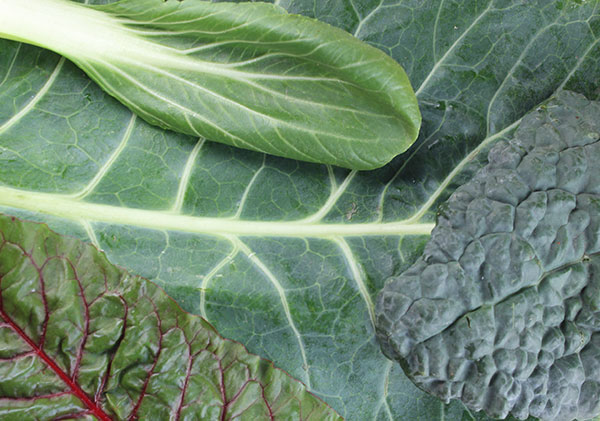
Health Benefits of Green Leafy Vegetables
A Nutritious Protein-Rich Food Source
Dark green leafy vegetables contain high amounts of minerals and are one of the highest plant-based protein sources available. Providing all essential amino acids they help to build strength and muscle mass. Gorillas, who forage mostly on leafy green vegetables, are one of the strongest and physically powerful animals known in the animal kingdom.
Greens are very beneficial to those adhering to a vegetarian, vegan and raw vegan diet. They are a much cleaner food than animal-based proteins, which are acidic to the body, causing uric acid build-up as well as unhealthy cholesterol levels associated with cardiovascular disease.
Leaf protein concentrates have actually been used by some organizations for combating world hunger and have been shown to be particularly beneficial for anemic individuals or those suffering from malnutrition.
A Natural Plant-Based Multivitamin
Green leafy vegetables are a natural plant-based multivitamin packed with vitamins A, C, K and folate, in addition to trace minerals, including good amounts of sulfur, potassium, calcium and iron.
Consuming them in condensed drinks, like green smoothies or green juices, is an
energizing way to start your day and can help to eliminate addictions to
coffee or other caffeinated substances.
Most greens are more beneficial when eaten in their raw form, but some varieties can also be lightly steamed or marinated and will still retain proteins and various phytonutrient content. Prepared as salads, they are one of the best sources of dietary fiber helpful for improved digestion and healthy bowel movements.
Good Source of Omega-3 Fatty Acids
Many green leafy vegetables are sources of omega fatty acids and are particularly high in ALA or omega-3's compared to omega-6 fatty acids. ALA is present in green leafy vegetables because it helps the plant convert sunlight into carbohydrates, proteins and fats.
Omega-3 fatty acid, or alpha-linolenic acid (ALA), is the good fat that everyone needs to consume on a regular basis and is extremely beneficial for the brain and its neurological functions. Omega-3's and their derived oils are known to reduce inflammation in the body and help to counteract the effects of pro-inflammatory AA fatty acids, refined vegetable oils and grain-fed animal products. They are vital components to such things as cell membrane stability, oxygen transfer, immune response and cardiovascular maintenance.
Generally, two heads of lettuce or 125 calories of leafy greens is about 1 gram of ALA, which is often a lot to eat for the average person. However, consumed in green juices or used in green smoothies, the amount of omega-3 fatty acids can be increased significantly.
Some green powder supplements, like moringa, and microalgaes such as marine phytoplankton and blue-green algae are also good to include in the diet because they offer more omega-3's per quantity ingested. Omega fats are also found abundantly in certain seeds like chia, flax and hemp seeds and their derived oils.
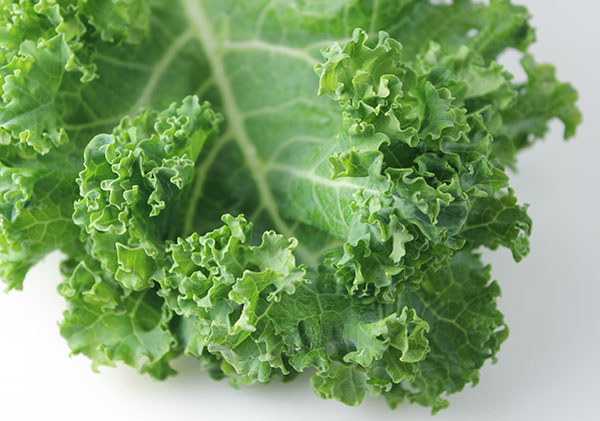
Dark Leafy Greens, High in Chlorophyll Content
"Greens", especially darker leafed varieties, are known for their exceptionally high amounts of chlorophyll. Chlorophyll is the pigment which gives plants their green color and is very close to the same molecular structure as human blood cells and is in fact beneficial for enhancing oxygen transport and increasing red blood cell production.
Eating greens and particularly consuming them in concentrated amounts in green smoothies or green juices helps to nourish and cleanse the blood as well as purify the liver and lymphatic system. These green foods and drinks are very useful for removing and neutralizing poisonous substances from the bloodstream, such as heavy metals, radiation, pesticides and other ingested pollutants.
Daily consumption can also, as a side-effect, help to uplift one's mood, alleviate depression and increase mental focus.
Moreover, chlorophyll also acts as a powerful natural anti-inflammatory. In a 2012 study, the chlorophyll component in fresh green leaves showed that "chlorophyll A and its degradation products are valuable and abundantly available anti-inflammatory agents and promising for the development of phytomedicine or conventional medicine to treat inflammation and related diseases."
Alkalizing Food Source for Balancing pH Levels
Leafy greens, like kale, collard, cilantro, spinach and lettuce, are alkaline food sources and can help counter the effects of frequently consumed acid-forming foods, such as legumes, animal products as well as nuts and seeds.
Adding green leafy vegetables to your breakfast, lunch or dinner can help improve your diet
and offer a great way to alkalize and balance most meals. It is optimal to keep the body fluids and blood at a slightly alkaline pH of about 7.4. This helps to ensure a healthy balance of intestinal microbiota and prevents the overgrowth of fungal strains, like candida, which thrive in acidic environments.
In the words of health expert Donna Gates, author of the Body Ecology Diet, "Knowledge of how to keep your blood in a slightly alkaline condition is vital to restoring your health. An acid/alkaline imbalance toward too much acidity allows yeast, viruses, rebellious cancer cells and various other parasites to thrive. Acidity also leads to conditions such as chronic fatigue, AIDS, arthritis and allergies."
Dark leafy greens help to counteract the negative effects of too many fats, starches or sweet foods. They are great to eat in combination with fruits, grains and high fat foods like avocados and olives.
May Help Decrease Cancer Risk
According to the American Cancer Institute and their article entitled "Foods That Fight Cancer", dark green leafy vegetables, like "spinach, kale, romaine lettuce, leaf lettuce, mustard greens, collard greens, chicory and Swiss chard, are excellent sources of fiber, folate and a wide range of carotenoids such as lutein and zeaxanthin, along with saponins and flavonoids." (Source)
Leaf for Life, a non-profit organization combating global diet-related malnutrition through the increased consumption of dark green leafy vegetables, states that "At least 35% of all cancers are directly attributable to diet. Dark green leafy vegetables are very rich in the vitamins, ascorbic acid and beta-carotene, and contain a fair amount of vitamin E. These three antioxidant vitamins plus other compounds found in plant leaves, such as indoles, flavonoids, and phenols are being shown to greatly reduce the likelihood of cancer developing."
Many of the benefits of leafy green vegetables can not only be attributed to their high amounts of immune enhancing antioxidants, like carotenoids and chlorophyll, but also other constituents like omega fatty acids, indoles and sulfur containing isothiocyanates. These compounds offer cancer chemopreventive effects and also, as we mentioned, help to reduce inflammation, a key factor in in many chronic diseases.
A number of the leafy green varieties come from the Brassica family, like kale, cabbage and bok choy, also referred to as cruciferous vegetables. In a study on the effect of crucifers on cancer growth, published in the journal “Pharmacological Research”, it states that "a high intake of cruciferous vegetables has been associated with lower risk of lung and colorectal cancer in some epidemiological studies” and are viewed as “good sources of a variety of nutrients and phytochemicals that may work synergistically to help prevent cancer." (Source)
Purchasing Organic Green Leafy Vegetables
It is always best to try to purchase the freshest greens possible to retain the greatest amount of nutrition and life-force, preferably organically grown without the use of chemical nitrate-based fertilizers or pesticides. It is important to remember that green leafy vegetables are only as nutritious as the minerals and nutrients in which they are grown, so quality can be a key factor for optimal nutritional uptake.
Farmer's markets are usually excellent places to find freshly harvested greens and many species are very easy to cultivate in homegrown gardens in mild to moderate climate zones.
Below is our list of top leafy green varieties and some of their health benefits.
Top Green Leafy Vegetables List
Arugula
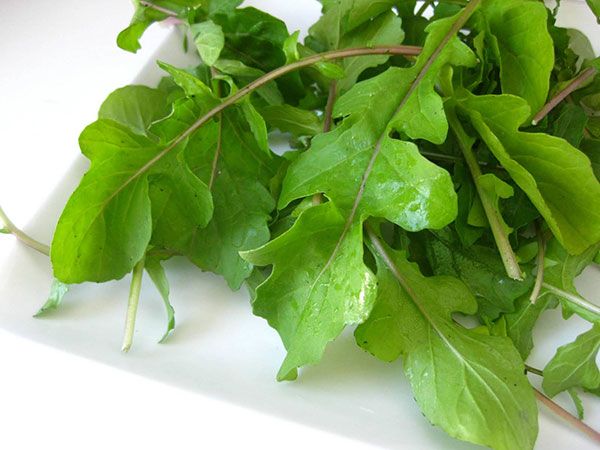
Arugula, also called "rocket lettuce", is known for its strong pungent and peppery flavor. It is frequently used as a salad ingredient mixed with other more neutral tasting greens. It is native to parts of the Mediterranean region, where it is a popular green leafy vegetable, but is also commonly consumed in many parts of the world typically eaten raw as a salad green, pesto or as a side dish with meals. Arugula is also sometimes steamed, like spinach, or added to various cooked cultural recipes.
Rocket lettuce, a member of the Brassica family, is a rich source of immune and brain boosting phytonutrients such as sulforaphane and indoles. It additionally contains a good amount of the vitamins A, C and K as well as folic acid, copper, calcium, iron and potassium. One cup of raw arugula contains 38 mg omega-3 fatty acids and 26 mg omega-6 fatty acids. (Source)
Bok Choy
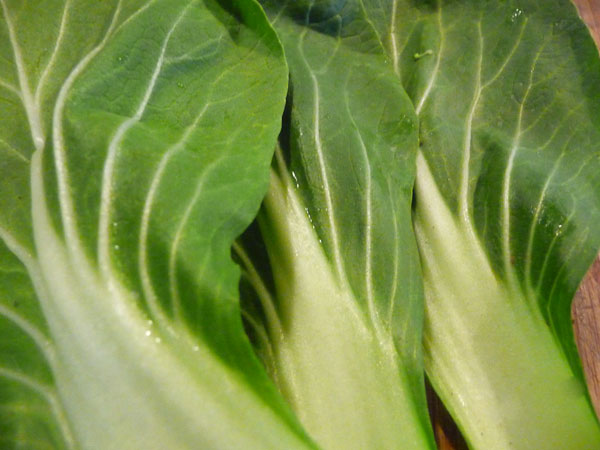
Bok choy (Chinese cabbage) is known for its smooth rounded green leaves and thick white stalks. The chopped greens and stalks are a most popular stir fry ingredient in Asian cultures and are also enjoyed in soups or eaten as a raw green in salads. Chinese cabbage comes from the "Brassica rapa" family which also includes other green leafy varieties like tatsoi, mizuna, rapini and komatsuna, used for their unique flavors and textures in gourmet cuisine worldwide.
Bok choy and many of these Brassica-related species contain phenolic compounds and glucosinolates beneficial to most people, but should be avoided in large amounts by those sensitive to goitrogens, which can inhibit the production of thyroid hormones. The leaves are sources of the vitamins A, C, K and folate. One cup of raw bok choy contains 38.5 mg omega-3 fatty acids and 29.4 mg omega-6 fatty acids. (Source)
Cilantro
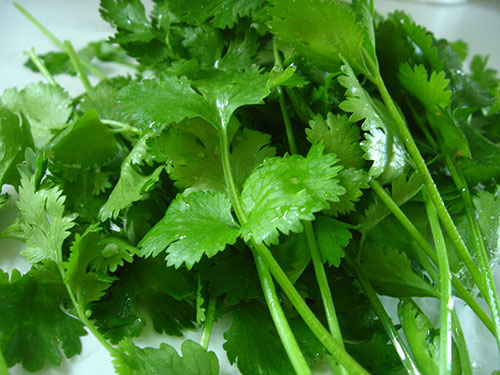
Cilantro, often referred to as coriander or Chinese parsley, is a green leafy vegetable that grows from the seeds of the popular culinary spice, coriander. Cilantro leaves and stems contain bioactive compounds such as phenolics, flavonoids, steroids and tannins that have been evaluated for their antihepatotoxic, antidiabetic and antioxidant activities.
The leaves and stems of the plant when juiced are an extremely purifying food for the blood and cleansing to the organs of the body, especially the liver, kidneys and colon. Some research has demonstrated that high concentrations of cilantro help to accelerate the excretion of mercury and other metallic substances from the body via the urine.
Collard Greens
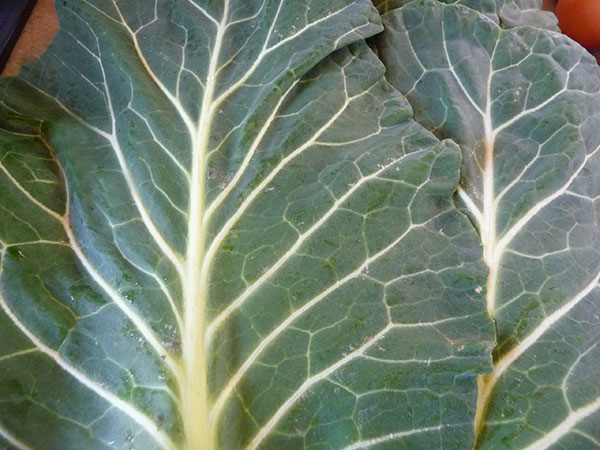
Collard is a dark leaved variety known for its relatively large-sized leaves. Some evidence suggests that both collard and kale species have been consumed for close to 2,000 years and were originally cultivated by the ancient Greeks. Today they are a traditionally eaten food in the Southern U.S. as well as East Africa, Brazil and Portugal.
Although collard greens or "collards" are typically prepared as a steamed vegetable, they are also very nutritious served as a raw leafy green used for wraps as a tortilla replacement or blended up into raw soups, green smoothies or pressed through a juicer. Collards are very high in vitamins A, C, K, folate, calcium and contain significant amounts of diindolylmethane (DIM) and sulforaphane, both potential anticancer components found in some cruciferous vegetables. One cup of raw chopped collards contains 38.9 mg omega-3 fatty acids and 29.5 mg omega-6 fatty acids. (Source)
Kale
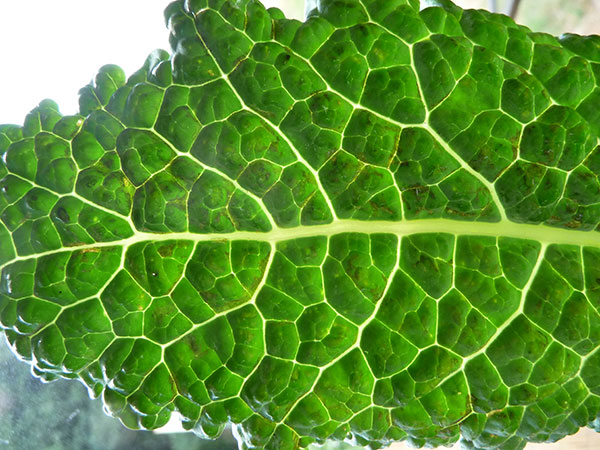
Kale is the "queen of greens" used extensively for centuries in all parts of the world. There are many types of kale varieties, some with rough dark green leaves, like lacinato or "dinosaur kale", while others have ruffled edges and sometimes purple pigmentation, such as curly kale or red leaf kale. There are many ways to enjoy kale lightly steamed, added to soup broths or prepared as a raw vegetable in a marinated kale salad or dehydrated as the now popular "cheesy kale chip."
Kale's are considered to be some of the darkest and most nutritious green leafy vegetables. They are very high in the minerals calcium, manganese, copper, potassium and are good sources of iron and magnesium. Kale is additionally extremely abundant in vitamin K, vitamin C as well as carotenoids, like lutein and zeaxanthin. The leaves also contain significant amounts of sulforaphane and indole-3-carbinol, helpful for DNA repair and anticancer properties. One cup of raw chopped kale contains 121 mg omega-3 fatty acids and 92.4 mg omega-6 fatty acids. (Source)
Lettuce
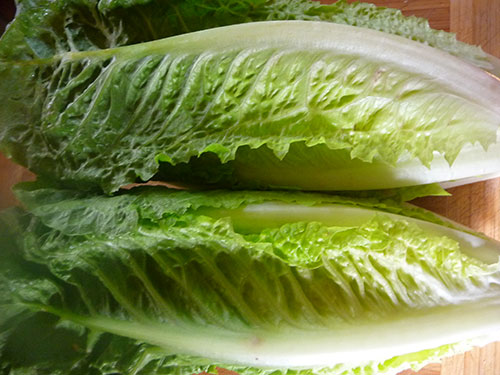
The very first lettuce plants were cultivated from the wild lettuce plant by ancient Egyptians, producing a plant with less of a bitter taste and succulent crisp leaves. Today there are many different types of lettuce available with some of the most well-known being romaine, red and green leaf lettuces. Usually consumed as a raw salad green, lettuce is also now commonly grown for its small tender leaves, harvested after about 3 weeks and sold as mesclun greens in an assortment of prepackaged salad mixes.
All lettuce is very hydrating to the body and contains good amounts of dietary fiber, vitamin A and K. One cup of shredded romaine lettuce contains 53.1 mg omega-3 fatty acids and 22.1 mg omega-6 fatty acids. (Source)
Parsley
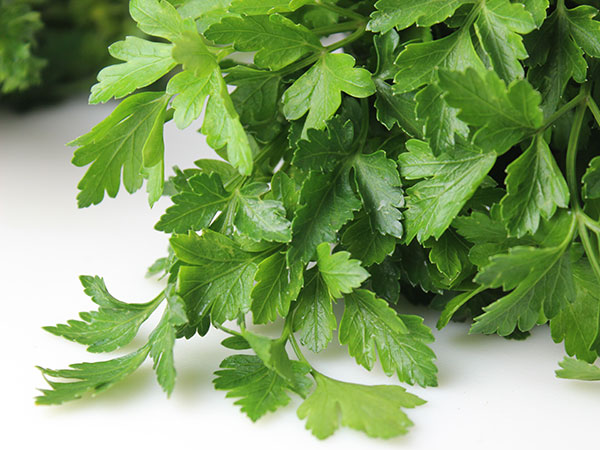
Parsley is native to the eastern Mediterranean regions and is now widely grown and consumed all over the world. Two major varieties include coarse curly-leaved parsley (or French parsley) and flat-leaved often referred to as Italian parsley. Both types have a similar refreshing taste and are used as an herb, spice as well as a vegetable. Often utilized as a garnish with other foods, parsley leaves and stems additionally make an excellent juicing ingredient as a blood and lymph cleanser.
Parsley contains volatile oils and antioxidant flavonoids, like apigenin, myristicin and luteolin, helpful against neutralizing toxins and providing anti-inflammatory actions. Parsley is very high in vitamin K, vitamin C, carontenoids, folate and iron. One cup of raw parsley contains 4.8 mg omega-3 fatty acids and 69 mg omega-6 fatty acids. (Source)
Spinach
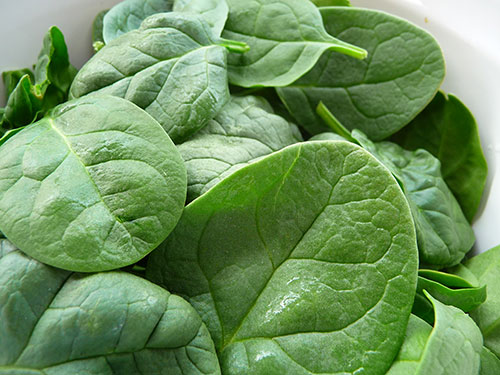
Spinach is believed to have originated in ancient Persia but is now a common potherb grown and used worldwide. It is traditionally served as a steamed green but is also a popular salad ingredient. The leaves contain the vitamins A, C, K and folate in addition to glycoglycerolipids studied for their potential as anticancer compounds.
Spinach is usually known for its high iron content, but is only slightly higher than other mineral-rich greens like kale or collard. Because spinach contains substantial amounts of oxalic acid, which can bind to nutrients, it should be consumed with acid-type foods like lemon or vinegar to make it more digestible and easier to nutritionally utilize. One cup of raw spinach contains 41.4 mg omega-3 fatty acids and 7.8 mg omega-6 fatty acids. (Source)
Wild Greens

It is good to include a small portion of wild edible greens in your diet throughout the year when available. Many varieties grow prolifically in moderate climates during the spring and fall seasons as well as throughout the year when growing conditions are optimal. Wild greens offer a source of nutrition unmatched by cultivated store bought produce or even garden grown foods.
Some of these wild edibles may include: dandelion, mallow, miners lettuce, nettle, chickweed, purslane, wild grape leaves and watercress.
Caution for Those with Hypothyroidism
While eating small amounts of raw or steamed cruciferous greens, like kale, collard, bok choy and watercress, has not been shown to adversely affect those with hypothyroidism, concentrated green juices with a large amount of goitrogen content is recognized to potentially impede thyroid functions by inhibiting the uptake of iodine. (Source)
Check out our page on non-cruciferous green leafy vegetables
if you have a thyroid disorder and are looking for other options to
avoid the potential goitrogen content found in the common brassica family.
How to Use
1) Juicing Greens
Green leafy vegetables are especially nutritious when juiced. This is because the nutrient content is concentrated by juicing the leaves and removing the fiber. Green leafy vegetables are great to add to
juicing recipes or use as an ingredient in a green juice. (Benefits of Drinking Green Juice)
2) Green Smoothies
Making a green smoothie is one of the best ways to "get your greens", especially if you have an aversion to the taste of them. Because smoothies are usually made with sweet fruits, they are perfect for camouflaging the sometimes "green" flavor.
You can actually add quite a bit of kale, collard or any green to a smoothie drink because they blend down to just a small amount by volume. Blended foods and drinks are easily absorbed because they are essentially pre-digested, enabling maximum amount of nutrients and fiber content.
3) Eating Raw Greens
A delicious way to eat raw kale is in a kale salad recipe. The leaves are chopped and marinated, creating a nice texture in combination with other vegetables. Marinating raw kale is recommended to soften the leaves and make it more digestible.
Green leafy vegetables are a great addition to raw salads, raw soups or for use as wraps for nut pates, tacos or our raw hummus.
4) Dehydrated Kale Chips
Greens, like curly kale, can be dehydrated whole in cheesy kale chips or blended into cracker recipes, providing a nice alternative to the
fried potato or corn chip.
5) Steaming Greens
Steaming your green leafy vegetables is preferred by some people and, as long as you also drink the liquid broth you steam them in, you are getting more of the nutrient content. They make an excellent soup ingredient for this reason.
We recommend lightly steaming the leaves just enough to retain a bright green color. For sautéing with garlic and onions we advise using either coconut oil or red palm oil, which are better fats to use for cooking purposes.
Precautions:
Green leafy vegetables are a healthy addition to the diet and safe to consume in moderate quantities for most people. When used in concentrated amounts in green juices or green powder supplements, cleansing detox reactions may occur. When consuming large quantities of green juice, seek the advice of your health care provider if you have a serious illness or medical condition. Excessive intake of cruciferous leafy greens should be largely avoided by those with an underactive thyroid. Those with history of kidney stones should avoid eating excessive amounts of oxalate-rich green leafy vegetables, like Swiss chard or spinach.
